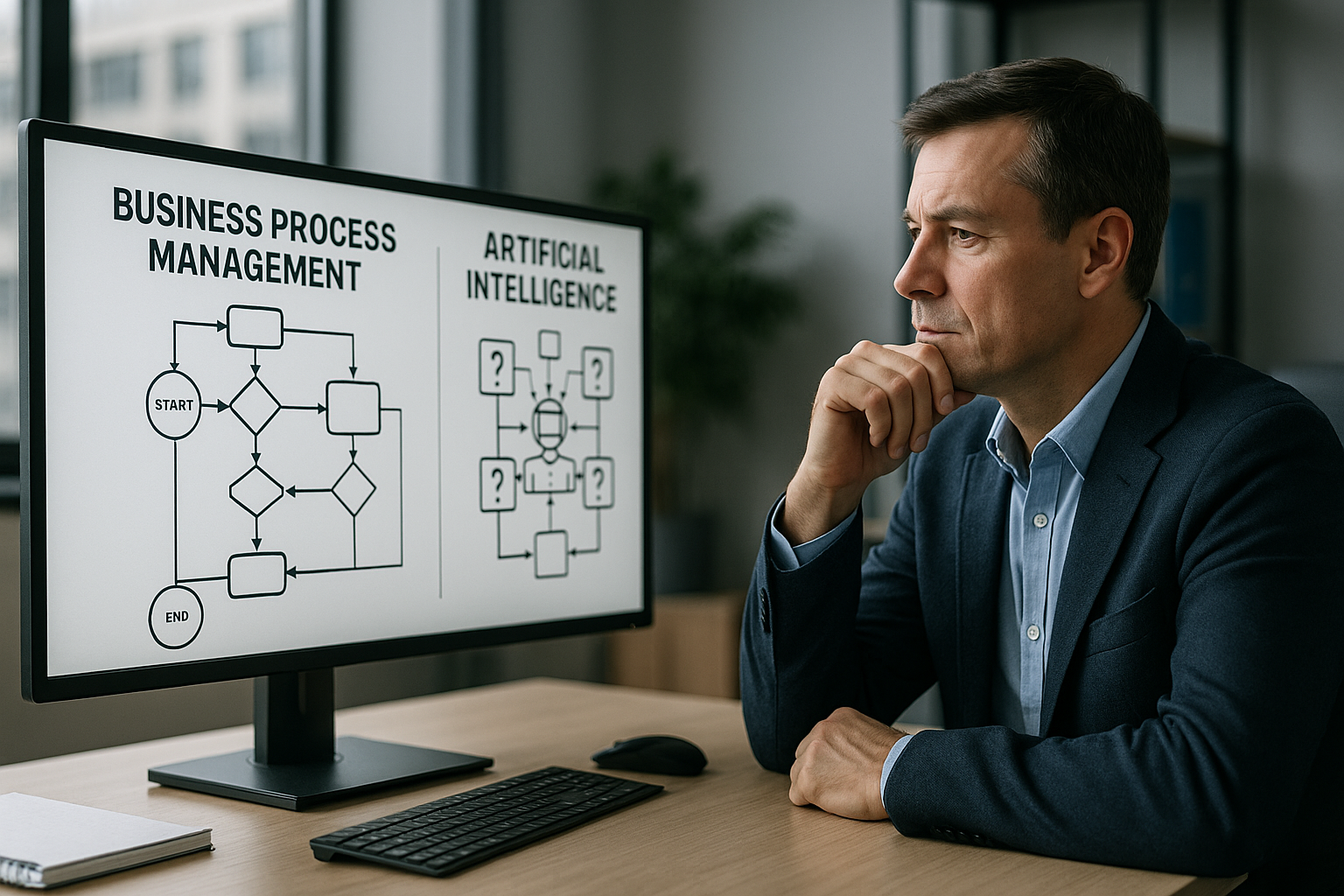
How Agentic AI is Redefining Business Process Management
09 Oct

For decades, Business Process Management (BPM) has been the backbone of enterprise operations, helping organizations define, monitor, and optimize workflows across departments and systems. Traditionally, BPM relied on tools like Business Process Model and Notation (BPMN) to map out linear flows, automate structured tasks, and ensure governance. But with the rise of agentic artificial intelligence (AI)—software agents capable of autonomous decision-making, planning, and tool use, BPM is undergoing a fundamental transformation.
From Static Workflows to Dynamic Agents
Classic BPM emphasized predefined flows with strict human task assignments and system integrations. Agentic AI changes this paradigm by introducing agents that can monitor events, plan multi-step actions, and call APIs or enterprise applications on their own. Instead of waiting for a human or a trigger to advance a workflow, an agent can proactively handle exceptions, reassign tasks, or escalate cases. This shift is moving BPM from being static and sequential to adaptive and dynamic. As McKinsey research notes, agent-based systems can turn passive copilots into proactive teammates within enterprise processes.
BPM as the Control Plane for Agents
Rather than replacing BPM, agentic AI is positioning BPM as the governance layer for autonomous software agents. Emerging best practices show organizations using BPMN to constrain and orchestrate what agents can do, making outcomes auditable and compliant. A recent analysis by Camunda highlights how “agentic process orchestration” leverages BPMN to define guardrails, approval points, and escalation pathways. In this model, BPM becomes the control plane that balances freedom with accountability.
From Task Automation to End-to-End Orchestration
While traditional BPM focused on automating human tasks around systems of record, agentic AI extends orchestration to include event monitoring, intelligent routing, and iterative follow-ups. For example, an AI agent might monitor a customer service dashboard, detect a backlog, open a case in a CRM system, collect relevant context, and alert a human supervisor—all without a predefined script. This evolution is creating processes that are less brittle and more responsive to real-world conditions.
The Importance of Human-in-the-Loop Design
One of the key lessons from early adopters is that agentic AI must be paired with deliberate human checkpoints. Research from the Process Excellence Network underscores that processes combining automation with human review yield better results, especially in industries with high compliance requirements. This “human-in-the-loop” approach ensures that agents handle routine tasks efficiently while humans step in for judgment calls, escalations, or ethical considerations.
Governance, Risk, and Security
With greater autonomy comes greater risk. Security experts warn that autonomous agents introduce new attack vectors, from prompt injection to misuse of enterprise APIs. A recent overview from ITPro emphasizes the need for least-privilege access controls, runtime monitoring, and revocable credentials for agents. Treating agents like digital interns—closely monitored and limited in scope—is emerging as a practical security model.
Operating Models and Organizational Change
The adoption of agentic AI within BPM also affects operating models. Beyond process analysts, new roles are emerging: “agent product owners” to define objectives and guardrails, and “toolsmiths” to curate the APIs and services agents can use. McKinsey points out that the biggest ROI gains come not from generic copilots, but from domain-specific agents tailored to core processes like claims handling, order-to-cash, or compliance monitoring. This requires closer collaboration between business units and BPM teams than ever before.
Practical Guardrails for Today
Organizations piloting agentic AI in BPM should focus on three principles:
- Model before deploying: Keep BPMN or equivalent models as the “contract” that constrains agent behavior and ensures transparency.
- Design least-privilege tool access: Agents should have narrowly scoped, auditable API rights to reduce misuse risks.
- Instrument everything: Capture structured logs of agent actions—inputs, decisions, and outputs—to satisfy both debugging needs and audit compliance.
Planning for the Future
Preparing existing Business Process Model and Notation (BPMN) diagrams and workflows for agentic AI does not require starting from scratch—it requires making them more modular, observable, and adaptable. Begin by decomposing large, monolithic workflows into smaller sub-processes that can be orchestrated or delegated to agents independently. Add clear gateways and decision points that can later serve as human-in-the-loop checkpoints or as safe boundaries for agentic actions. Incorporate metadata and annotations that describe not just the “what” of a task but also the “why”—contextual signals that AI systems can use for decision-making. Where possible, externalize rules into decision tables or business rule management systems (BRMS) so that both humans and AI agents can operate against consistent policy logic. Finally, instrument workflows with logging and monitoring hooks to capture agent activity, outcomes, and exceptions, ensuring transparency and auditability. These adjustments make existing BPMN assets AI-ready while preserving governance and human oversight.
Conclusion
BPM is not being displaced by agentic AI—it is evolving into the orchestration and governance layer for intelligent, autonomous agents. The shift is from rigid, predefined workflows to adaptive, agent-aware processes that are composable, observable, and secure by design. Enterprises that modernize BPM along these lines will gain agility while maintaining trust, compliance, and accountability in their core business processes.
Recent Articles
Metrics That Matter: How to Measure Automation ROI Beyond Cost Savings
Avoiding the Five Most Common Mistakes in Agentic AI Projects
Measuring the ROI of Human-Centric Document Processing Automation
Better Together: Humans and Artificial Intelligence in Healthcare Records Processing
Designing Enterprise Workflows for Cross-Cloud Integration
